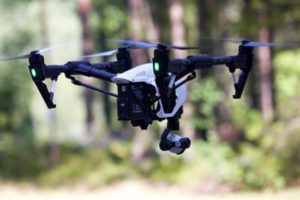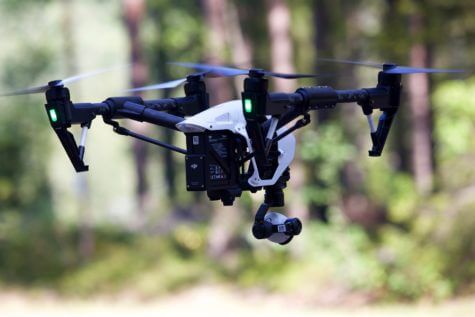BLACKSBURG, Va. — By now you’ve probably seen a consumer drone buzzing around a beach or a public park. Ever wonder how bad it would be if it crashed into somebody?
While drones are steadily increasing in popularity, and multiple industries are showing interest in using them to deliver services, there is still relatively little research on what happens if they impact a bystander.

To answer these questions, researchers at Virginia Tech are dropping them on and flying them full speed — into crash test dummies.
“There’s a wide range of risk,” says one of the study’s leaders, Steven Rowson, in a press release. “In some instances it was low, and in some instances it was high, and there are lessons we can take away from that to reduce injury risk in a deliberate way through product design.”
Rowson, along with an injury biomechanics team, found that it is unsurprisingly the heavier drones that pose the most danger. In tests where the drone was dropped straight down, the smallest ones posed less than a 10 percent risk of severe neck injury. For the largest aircraft tested, the median risk was 70 percent.

To reduce the risk, especially in the larger drones, the team said design features such as break-away parts and shapes that deflected the aircraft to the side in an impact can make a big difference in safety.
“If you reduce the energy that’s able to be transferred to be head, you reduce the injury risk,” says Eamon Campolettano, a doctoral student and the research paper’s first author. “The overarching goal for manufacturers should be to limit energy transfer.”
With these and future impact tests as a guide, the researchers said they are working with individual companies to reduce risks.
While many have likely heard of plans by businesses like Amazon to use drones to deliver packages, the potential uses for these small drones is still just beginning to be explored.
For example, a group of researchers in Sweden are getting promising results on the possibility of using drones to speed delivery of defibrillators to help save heart attack victims.
Another study showed that consumer drones have already been used to spot and save hundreds of victims of natural disasters such as floods.
Before these and other uses can fully be rolled out in the United States, the Federal Aviation Administration will have to be assured that the drones won’t be too dangerous to the public.
“The big question right now is, what is the acceptable level of safety?” says Mark Blanks, the director of the Virginia Tech Mid-Atlantic Aviation Partnership, who also chairs an industry standards subcommittee developing recommendations for safe operations over people. “How much proof does the FAA need before they say, ‘Yes, that’s okay’? Once those standards are in place, we’re going to see huge expansion in the industry.”
The paper detailing the Virginia Tech team’s findings was published recently in the journal Annals of Biomedical Engineering.

The chances of a private, recreational (< 250g) drone dropping straight down and hitting someone are effectively zero.
If it happened, the chances of injury are effectively zero, not 10%.
Only large commercial and police drones are dangerous, and they are dangerous whether they hit you or not.
Ban all drones over 250 g!